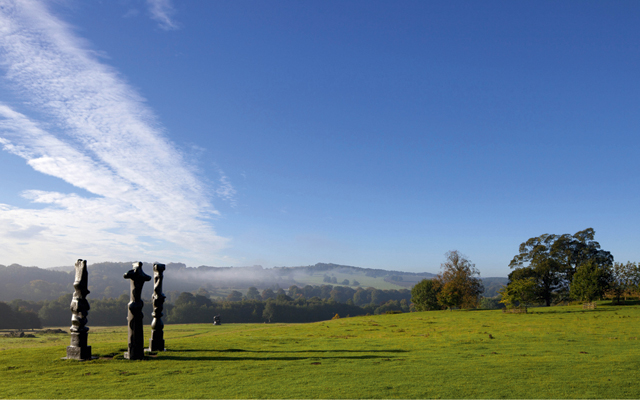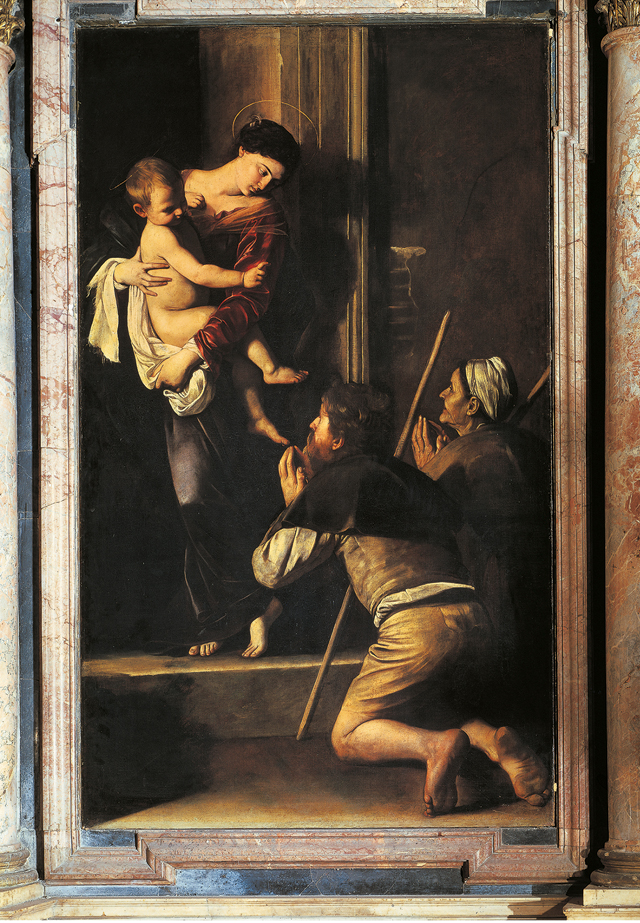Exhibition review: Henry Moore at YSP, Waddesdon and Leeds Art Gallery
A triumphant show sheds new light on Henry Moore, says Tim Richardson.


Do we ‘know’ the work of Henry Moore? Since the 1960s, many people with an interest in art would probably say that they do. This has led to this artist perhaps being rather taken for granted, but, as two revelatory current exhibitions demonstrate, Moore’s works on paper massively enrich our under-standing and appreciation of those monumental semi-figurative as opposed to semi-abstract forms that populate the landscape of the English artistic imagination.
Moore produced more than 3,500 drawings, etchings, lithographs and paintings in the decade before his death in 1986 and a selection of these overlooked later works is being exhibited this summer at Yorkshire Sculpture Park (YSP), near Wakefield, West Yorkshire, and at Waddesdon Manor in Buckinghamshire.
Nominally, the highlight of the YSP exhibition are the 12 large sculptures placed across the designed landscape (originally the deer park to Bretton Hall), which Moore himself, as a Yorkshireman, identified late in life as a perfect setting for his work. This land is now grazed by sheep, which he much preferred to deer (and cows), as he thought they were in scale with the work although they do tend to stain the works with lanolin as they rub against the bronze (this can be washed off). The plinth of Large Totem Head (1968) has also had to be raised because lambs kept jumping up to lie on its base.
These works, set in natural landscape, are as powerful as one would anticipate. Those placed in the more formal parts of the estate create more unfamiliar sensations: the stark-white fibreglass of the late work Large Reclining Figure (1984) is set against formal hedges; the tall and sinuous Reclining Figure: Angles (1979) stands sentinel at the top of the walled garden.
In the Underground Gallery at YSP, an attempt has been made to relate Moore’s work to the landscape by means of smaller sculptures in marble, bronze and plaster, as well as the works on paper. This has been essayed before in exhibitions, but this time, the emphasis is on the hidden power of the inspirational landscape of York-shire and the influence on his work of geological formations and especially caves.
The artist was the son of a Castleford miner and, looking at photographs of Moore in Wheldale Colliery (a commission of 1941), I found myself wondering whether the marks and striations on the bodies of the bare-topped miners can be related to Moore’s consistent use of strident cross-hatching, both in the drawings and on many of the bronze and plaster sculptures.
In the final gallery, as well as a series of striking jet-black lithographs of Stonehenge (1973), there is a wall of 16 remarkable lithographs, etchings, drawings and watercolours on diverse landscape themes: a rich array of storm scenes and windswept landscapes that are not preparatory studies for sculptures, but might constitute an exhibition in their own right.
Sign up for the Country Life Newsletter
Exquisite houses, the beauty of Nature, and how to get the most from your life, straight to your inbox.
When Mary Moore, the artist’s only child, saw these works hung together for the first time, she exclaimed that she now realised that they were all depictions of the Yorkshire landscape, looming large in her father’s imagination even as he worked in his studio in Hertfordshire.
Waddesdon Manor has just one work outside Hill Arches, sited next to the Aviary and one bronze inside the Coach House Gallery: King and Queen (formerly sited in the landscape at Glenkiln, Dumfries-shire). Otherwise, the exhibition consists of one large room of works on paper that reflect the diversity of Moore’s imagination. As at YSP, it is as if the monolithic quality of the bronzes in the landscape is leavened by the kaleidoscopic multiplicity of the works on paper.
A larger exhibition might have proved rather exhausting given the intensity of the work and its 60-year span, but the pacing and grouping of works here is well judged, from early works executed on scraps of newspaper, such as the pen-and-ink The Artist’s Mother (1927), to pre-Second World War paintings and drawings of sculptures in clarified if imaginary ‘settings’ and ‘land-scapes’, to surprises (for me) such as the colourful textile patterns of 1943.
At the end of his life, Moore’s creative pace apparently accelerated, as evinced here by his drawings of the Yorkshire landscape in winter, of rock formations and intense meditations, such as Study after Giovanni Bellini’s Pietá, one of his last commissions, which the critic John Berger was to use a few years later to illustrate his own late reconciliation with the artist’s work. It’s quite a summer for Moore enthusiasts, as a third exhibition opens at Leeds Art Gallery on July 24, this time on the theme of his commissioned works for three specific architectural settings.
‘Henry Moore: Back to a Land’ is at Yorkshire Sculpture Park, Wakefield, West Yorkshire, until September 6 (01924 832631; www.ysp.co.uk). ‘Henry Moore: From Paper to Bronze’ is at Waddesdon Manor until October 25 (www.waddesdon.org.uk; 01296 653226). ‘Figure and Architecture: Henry Moore in the 1950s’ is at Leeds Art Gallery from July 24 until February 7, 2016 (01132 478256; www.leeds.gov.uk/artgallery)

My favourite painting: Fiona Shaw
Fiona Shaw chooses her favourite painting for Country Life.
Country Life is unlike any other magazine: the only glossy weekly on the newsstand and the only magazine that has been guest-edited by HRH The King not once, but twice. It is a celebration of modern rural life and all its diverse joys and pleasures — that was first published in Queen Victoria's Diamond Jubilee year. Our eclectic mixture of witty and informative content — from the most up-to-date property news and commentary and a coveted glimpse inside some of the UK's best houses and gardens, to gardening, the arts and interior design, written by experts in their field — still cannot be found in print or online, anywhere else.
-
 Six rural properties with space, charm and endless views, as seen in Country Life
Six rural properties with space, charm and endless views, as seen in Country LifeWe take a look at some of the best houses to come to the market via Country Life in the past week.
By Toby Keel
-
 Exploring the countryside is essential for our wellbeing, but Right to Roam is going backwards
Exploring the countryside is essential for our wellbeing, but Right to Roam is going backwardsCampaigners in England often point to Scotland as an example of how brilliantly Right to Roam works, but it's not all it's cracked up to be, says Patrick Galbraith.
By Patrick Galbraith